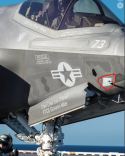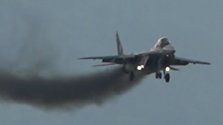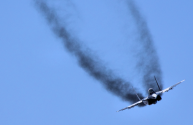Self-explanatory.
Looks indeed as if the pitot is gone …
Self-explanatory.
bro, please tell me why some fighters have pitot tube, others don't? what are the criteria that determines it?Looks indeed as if the pitot is gone …
Looks indeed as if the pitot is gone …
All fighters have pitot tubes, which are essential flight instruments to measure air speed. The best position to install it to get an accurate measurement is in front of the aircraft, since the air flow is not yet disturbed by the airframe. However, technology has improved so that the pitot tubes can be placed in other positions as well.bro, please tell me why some fighters have pitot tube, others don't? what are the criteria that determines it?
was that black smoke I saw? or its something else ?Self-explanatory.
They all have pitots. Best location is on the front of the plane so the airflow being probed isn’t affected by the movement and aerodynamics of the aircraft itself. Previous generations would typically have a pitot on the point of the nose cone. With the advent of AESA radar they were moved to the sides of nose cones as they can interfere (but not impossible to workaround F-16V, F-16 block 70/72 and J-11BG/BHG have AESA and pitots on the nose cone). Newer technology also allowed them to be made smaller (or removed and replaced with pitot plates like on the B-2, but that’s a bomber).bro, please tell me why some fighters have pitot tube, others don't? what are the criteria that determines it?
Others have pointed out that all fighters have pitot tube, I would add that all aircrafts have pitot tubes. What some fighters seem to be missing is the pitot tube mounted at the nose cone. This is actually common (all) practice in civilian aircrafts.bro, please tell me why some fighters have pitot tube, others don't? what are the criteria that determines it?




thanks a lotAll fighters have pitot tubes, which are essential flight instruments to measure air speed. The best position to install it to get an accurate measurement is in front of the aircraft, since the air flow is not yet disturbed by the airframe. However, technology has improved so that the pitot tubes can be placed in other positions as well.



thank you so much for all the illustrations, now I have a better understanding.Others have pointed out that all fighters have pitot tube, I would add that all aircrafts have pitot tubes. What some fighters seem to be missing is the pitot tube mounted at the nose cone. This is actually common (all) practice in civilian aircrafts.
Here are pitot tubes of various aircrafts.
F-35
View attachment 117780
F-22
View attachment 117781
J-20
View attachment 117782
Airbus A-321
View attachment 117783
